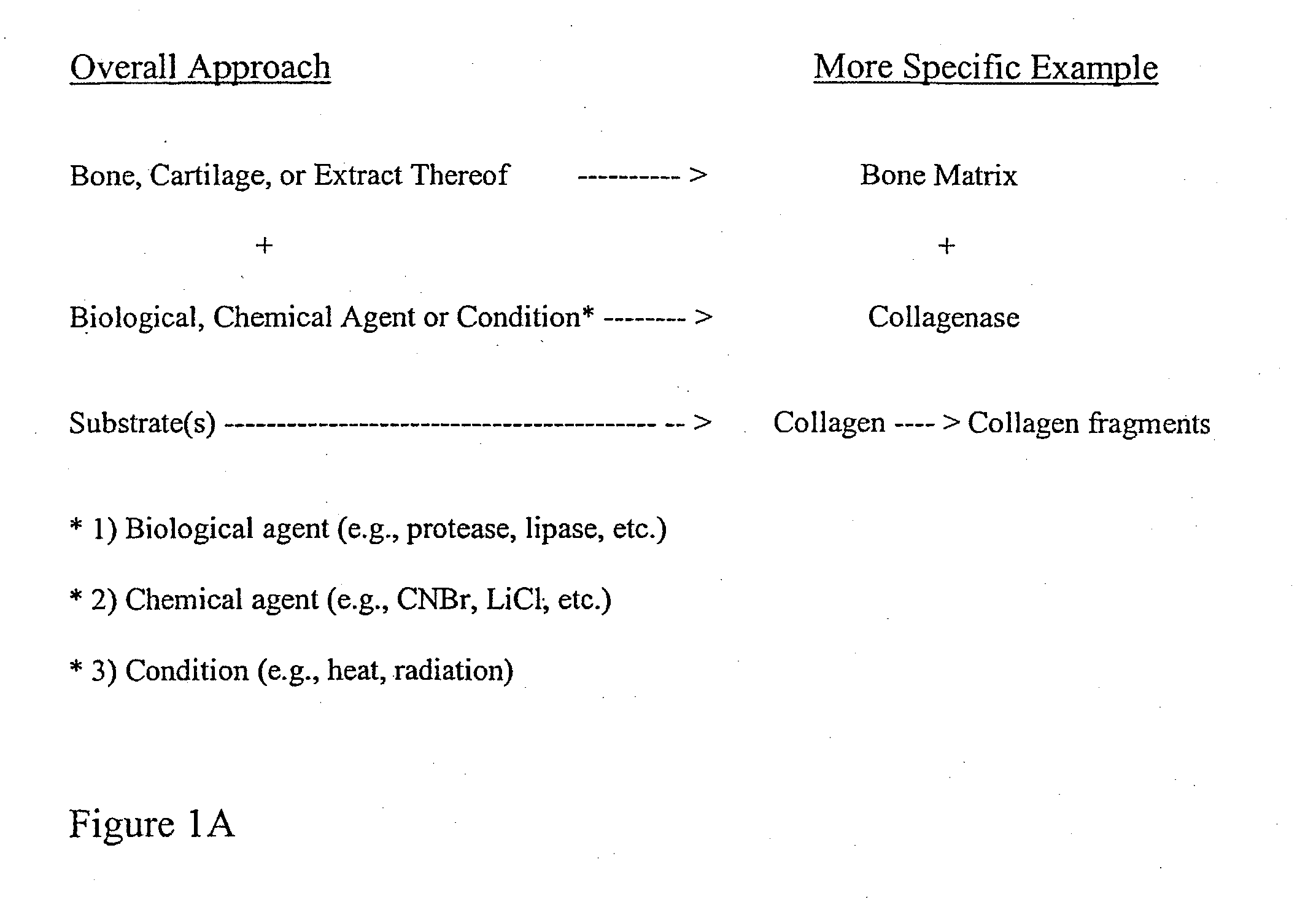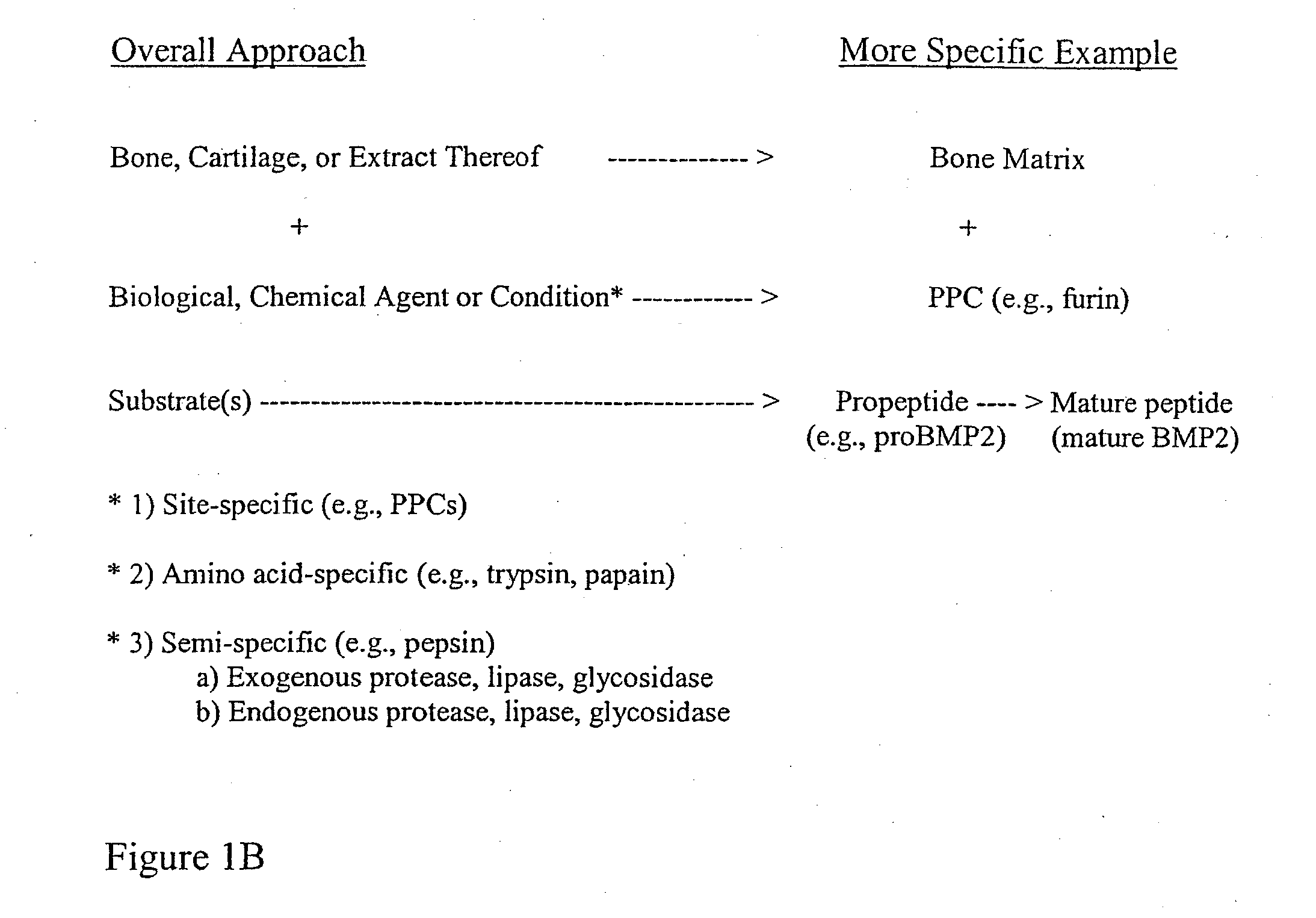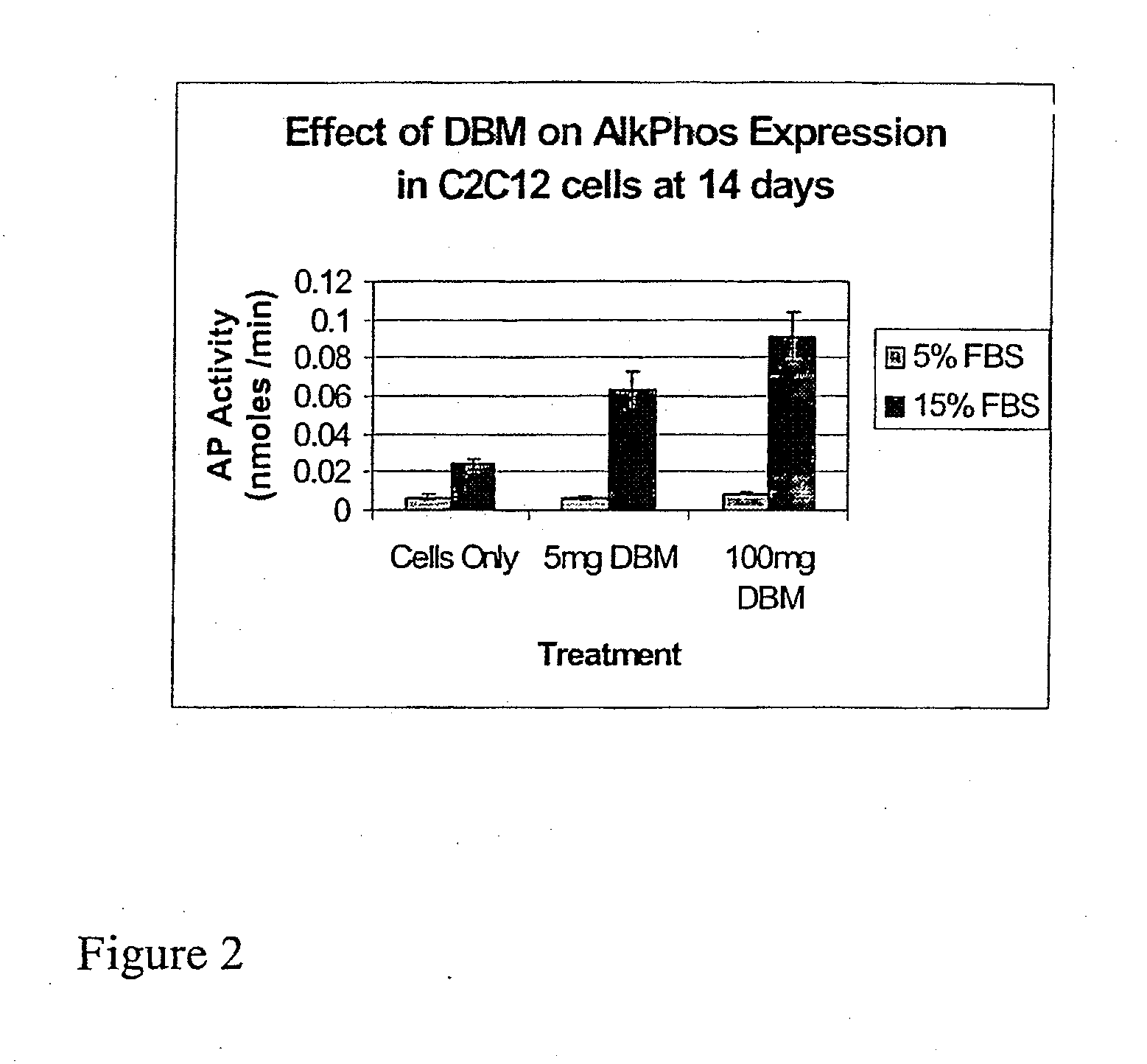Bone matrix compositions and methods
a technology of bone matrix and composition, applied in the field of bone matrix composition and method, can solve the problems of cleavage or degradation of inhibitory agents, and achieve the effects of enhancing the osteoinductivity of the bone matrix and enhancing the chondrogenic activity of the cartilage repair matrix
- Summary
- Abstract
- Description
- Claims
- Application Information
AI Technical Summary
Benefits of technology
Problems solved by technology
Method used
Image
Examples
example 1
The Effect of Furin on Demineralized Bone Matrix
[0198]This example relates to the study of the effect of furin and other PPC's on the osteoinductive capacity of human demineralized bone matrix.
[0199]A solution of 100 mM HEPES containing 0.5% Triton X-100, 1 mM CaCl2, pH 7.5 is prepared. Various amounts of human DBM (e.g., 40 mg) are incubated in the aforementioned HEPES buffer containing furin at concentrations of 0, 1, 5, 10, 20, 30, 40, 50, 60, 70, 80, 90 and 100 units per ml at temperatures ranging from 4° C. to 60° C. (e.g., 23° C., 37° C.) for periods ranging from 1 hour to 1 week (e.g., 24 hrs).
[0200]The above steps are repeated with the addition of 3 mM iodoacetic and / or 0.1 mM Benzamidine HCl in order to protect osteoinductivity of DBM. As a control, the experiment is repeated including 1 mM EGTA or the specific furin inhibitor C34H66N11O5CI (1 mM) in the HEPES Buffer. At the end of the incubation period the bone is washed with deionized H2O and lyophilized. 40 mg doses are ...
example 2
Preparing Demineralized Bone Matrix (DBM)
[0201]DBM may be prepared using any method or technique known in the art (see Russell et al. Orthopedics 22(5):524-531, May 1999; incorporated herein by reference). The following is an exemplary procedure for preparing demineralized bone derived from Glowacki et al. “Demineralized Bone Implants”Clinics in Plastic Surgery 12(2):233-241, April 1985, which is incorporated herein by reference. Bones or bone fragments from donors are cleaned to remove any adherent periosteum, muscle, connective tissue, tendons, ligaments, and cartilage. Cancellous bone may be separated from dense cortical bone and processed as large pieces. Cortical bone may be cut into small pieces to improve the efficiency of subsequent washes and extractions. Denser bone from larger animals may need to be frozen and hammered in order to produce chips less than 1 cm. The resulting pieces of bone are thoroughly washed with cold, deionized water to remove marrow and soft tissue.
[0...
example 3
Another Method of Preparing DBM
[0206]DBM may be prepared using any method or techniques known in the art (See Russell et al., Orthopedics 22(5):524-531, May 1999; incorporated herein by reference).
[0207]Demineralized bone matrix is prepared from long bones. The diaphyseal region is cleaned of any adhering soft tissue and then ground in a mill. Ground material is sieved to yield a powder with particles approximately 100 μm to 500 μm in diameter. The particulate bone is demineralized to less than about 1% (by weight) residual calcium using a solution of Triton X-100 (Sigma Chemical Company, St Louis, Mo.) and 0.6N HCl at room temperature followed by a solution of fresh 0.6N HCl. The powder material is rinsed with deionized water until the pH was greater than 4.0. It then is soaked in 70% ethanol and freeze-dried to less than 5% residual moisture.
PUM
| Property | Measurement | Unit |
|---|---|---|
| temperatures | aaaaa | aaaaa |
| temperature | aaaaa | aaaaa |
| diameter | aaaaa | aaaaa |
Abstract
Description
Claims
Application Information
 Login to View More
Login to View More - R&D
- Intellectual Property
- Life Sciences
- Materials
- Tech Scout
- Unparalleled Data Quality
- Higher Quality Content
- 60% Fewer Hallucinations
Browse by: Latest US Patents, China's latest patents, Technical Efficacy Thesaurus, Application Domain, Technology Topic, Popular Technical Reports.
© 2025 PatSnap. All rights reserved.Legal|Privacy policy|Modern Slavery Act Transparency Statement|Sitemap|About US| Contact US: help@patsnap.com



